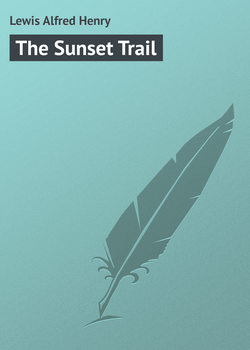Читать книгу The Sunset Trail - Lewis Alfred Henry - Страница 1
INTRODUCTION
ОглавлениеIt was in my thoughts, as I wrote these chapters and arranged their sequence, to fix in types a phase of American existence that, within the touch of present time, has passed away. The West has witnessed more changes than has the East. The common impression, and one to which all Americans are bred, leaves paleface Western occupation to a modern day. Whenever one’s thought wanders to what is old in this country one inevitably sets his face towards the East.
None the less, this feeling of an Eastern as an earlier settlement is error. In New Mexico and Arizona, while exploring an ancient Spanish church or considering some palace of sun-dried mud with a sixteenth-century origin, it will begin to press upon one how the East, after all, is but the younger theatre of European endeavour in this continent. Also, an odd feeling will grow, as one reflects that more than a half century before Winthrop and Standish and Bradford and Alden and those other stern and solemn ones, came ashore on Plymouth Rock, Santa Fé was a bustling capital – a centre of agriculture, of mining, of flocks and of herds.
St. Augustine is said to be the first founded town within the frontiers of this country, as the same are made and laid to-day. And yet it is in warm dispute, with a deal to tell on the New Mexican side of the question, if Santa Fé be not the age equal of her sister of the Everglades. Certainly, and say the most disappointing thing for Santa Fé, there was a no greater space than two or three years to fall between.
Considered as regions, Florida versus New Mexico, the latter should be the older. In its settlement, that stretch lying between Santa Fé and San Francisco, and south to the Rio Grande and the now North Mexican line, was in a fairly populous and flourishing condition three centuries and more ago. To say “New Mexico” or “Arizona” hath a far-off savage sound, and yet both were dominated of European influences and polka-dotted with many a white man’s town long years before Salem went hanging her witches or Pocahontas interfered to save the life of Smith. It was over three and one-half centuries ago that Coronado ransacked Colorado and Kansas for those “seven cities” and the gold he could not find.
In 1803 the first American trading expedition broke across the plains and entered Santa Fé. The expedition was planned by William Morrison, the grandfather of that Colonel William Morrison who, following Civil War, won fame as a House leader, and proposed to reform the tariff by horizontally reducing it. Until the Morrison trade invasion of New Mexico, the West in its European complexion had been furnished by the Spanish. Also, about this time the English and Scotch, with the Canadian French to aid them, came pushing southward and westward from British Columbia in a search for furs.
The fur trade grew apace. Beavers were first the purpose, then buffaloes, with such peltry folk as bears and wolves and foxes and otters and muskrats to be their incident. For fifty years the beaver was the great source of Western wealth; then came the buffalo to roundly cover twenty-five years. After that, the cattle; to be followed by the railway and the farm.
If one were to catalogue those human influences that have dealt with the West, the count in its procession would run somewhat like this: There was the Indian occupation – an occupation that has never wholly given way. In the sixteenth century, say in 1550, came the Spaniard with what we call “civilisation” and the Indians call “devilry,” to colour the control, and hold a West’s directing rein, for two hundred and seventy-five years. Then befell the English-speaking invasion from the sunrise side of the Mississippi. There was a beaver day, a buffalo day; and, covering both the beaver and the buffalo days, there was also a trader day, with its Santa Fé and Oregon trails.
On the heels of all these came the cattle day and the day of the herds, with the farm day slowly dawning. It is with that latter day, the cattle day, that I have dealt. In doing this I have seized on a real man and, in its tragedy at least, told what really happened. Speaking for its broader lines, this book is true, and there be scores who will recognise its incidents.
Alfred Henry Lewis.
New York City, February, 1905.
